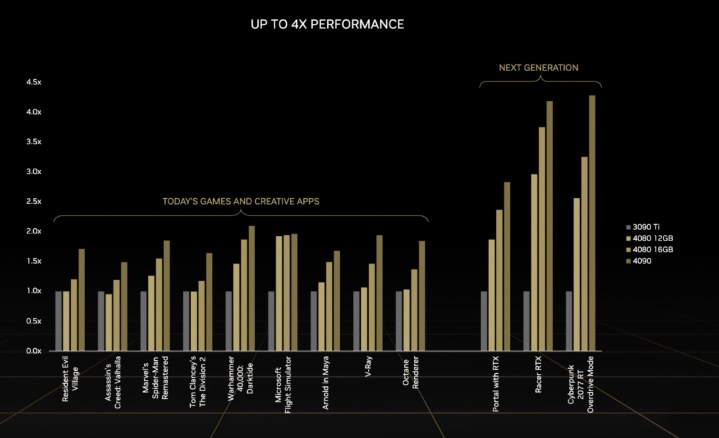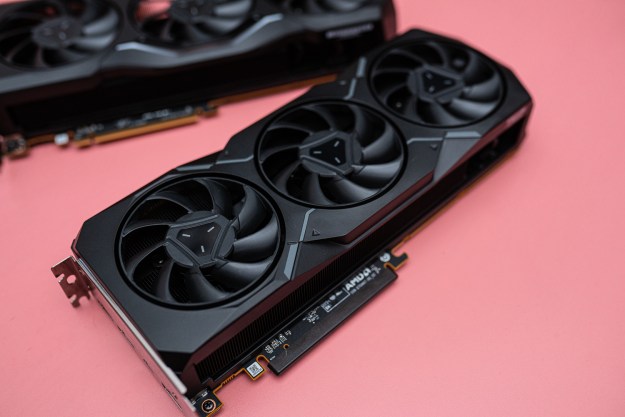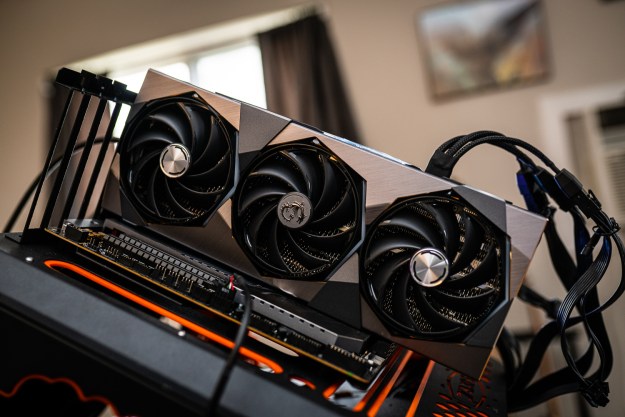Nvidia announced two versions of its RTX 4080 at its GTC keynote — a 12GB model and a 16GB model. On the surface, this seems simple. Two configurations of the same graphics cards, except with different amount of memory.
This is, after all, what Nvidia did with its RTX 3080 last year. There was the original 10GB RTX 3080, and the 12GB RTX 3080 that got released earlier this year.
But the situation with the two “versions” of the RTX 4080 couldn’t be more different. Not only is there a $300 gulf in price between these two products, but Nvidia confirmed to the media today that they do, in fact, use two different GPUs. The RTX 4080 16GB uses AD103, and the RTX 4080 12GB uses AD104. To call these two products different “versions” of the same graphics card is a pretty serious misnomer.
| Nvidia GeForce RTX 4080 16GB | Nvidia GeForce RTX 4080 12GB | |
| GPU | AD103 | AD104 |
| CUDA cores | 9,728 | 7,680 |
| Shader / RT cores | 49 / 113 | 40 / 82 |
| Tensor TFLOPS | 780 | 641 |
| Base clock | 2,210MHz | 2,310MHz |
| Maximum clock | 2,510MHz | 2,610MHz |
| Memory size | 16GB GDDR6X | 12GB GDDR6X |
| Memory bus | 256-bit | 192-bit |
| TDP | 320 watts | 285 watts |
| Price | $1,199 | $899 |
Looking at the other specs we now have, you can see how that plays out. The RTX 4080 16GB has 21% more CUDA cores, 27% more RT cores, and is capable of 18% more Tensor TFLOPS (trillion floating-point operations per second) than the 12GB model. Of course, it also has a wider memory bus and consumes more power too. All in all, the 16GB model is a much more powerful graphics card.
So, what then is going on with the naming of this 12GB RTX 4080? Well, just look at what Nvidia did with its initial launch of the first RTX 30-series cards. At launch, the company announced the RTX 3090, 3080, and 3070. Three GPUs down the line. What it’s doing with the RTX 40-series line is nearly identical, meaning the 12GB 4080, which retails for $899, feels a lot more like a proper RTX 4070 than anything else. That’s a problem, considering the RTX 3070 retailed for just $499.

When asked, of course, Nvidia sees the 16GB model as an “enhanced” RTX 4080, not the other way around. And maybe the company has a point, at least with how these cards are priced. The 16GB model is certainly priced as if it were an RTX 4080 Ti — or something along those lines. Nvidia has also confirmed that there will be no first-party Founders Edition of the 12GB RTX 4080.
Still, the whole thing has left a sour taste in the mouths of PC enthusiasts, who are looking at this 12GB RTX 4080 as a repackaged 4070 as a way to secretly raise prices. Nvidia hasn’t been shy about commenting on the rising cost of GPUs in the future, confirming that falling prices are a thing of the past.
We’ll have to wait and see what Nvidia eventually does with the rest of the lineup to get the full picture, but at the very least, it’s obvious that GPU pricing is continuing to rise, even if some of the costs are buried in the specs.
Editors' Recommendations
- Why you shouldn’t buy the best GPU of last year
- The RTX 4080 Super doesn’t move the needle — and it doesn’t need to
- This underrated AMD GPU beats the RTX 4070 Ti Super
- Watch out — fake RTX 4090s are being sold on Amazon
- These early RTX 4080 Super listings confirmed my worries about the GPU



